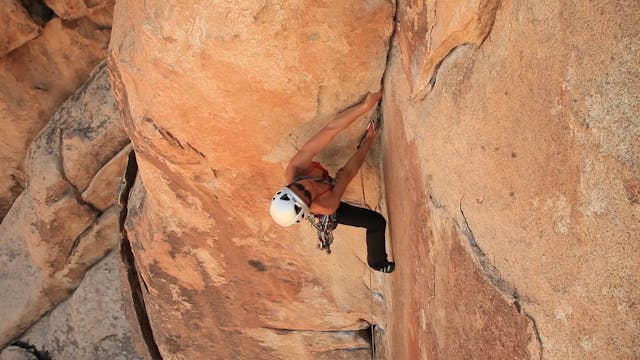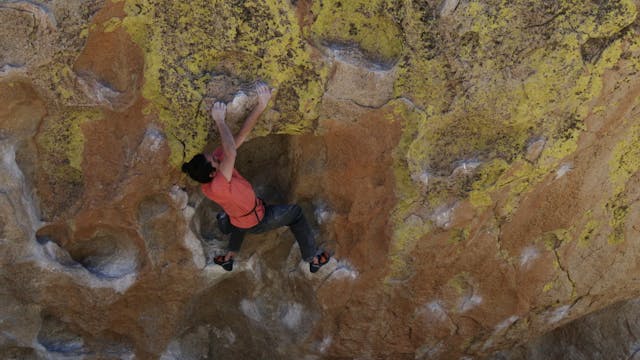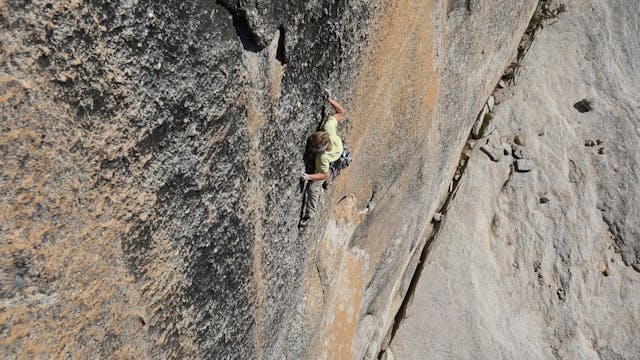Climbing Movement: 11. Hips In
Climbing Movement
•
1m 32s
The theory of “Hips In” relates to our “Posturing” and “Process of Movement” videos.
In posturing, the act of “hips in” involves transferring weight from your hands to your feet.
The only time your hips are not in, is when you are looking for your feet. Otherwise, you should almost always keep the hips in. This helps keep weight off of your hands.
Most good climbers try to keep their hips into wall, depending on the particular move they are making at that specific time. When in doubt, keep your hips in. Arms are often straight, shoulders are back, and center of gravity is in towards the wall.
By keeping the hips in, a climber focuses more weight on the feet. Again, this lessens the weight on your hands.
Sometimes your hips will be squared and front-facing to the wall. Other times, your hips will be sideways, but still in close to the wall. This sideways hip movement is often used in conjunction with the “backstepping” and “drop knee” skills associated with steep climbing.
On advanced moves, you will probably include techniques such as backstepping, drop knees, edging, and flagging, along with the use of hip transitions from centered to sideways. Please see our additional videos that describe these key concepts.
We hope you found this video helpful. Feel free to comment below with questions or thoughts!
Please remember, climbing is inherently dangerous. Climb at your own risk.
Up Next in Climbing Movement
-
Climbing Movement: 12. Sequencing
“Sequencing” involves envisioning potential combinations of moves for hands and feet, as well body positioning.
Visualizing yourself making the moves helps improve your chances for success. From there, one takes the pre-rehearsed movements in their head, and attempts them on the wall.
When ...
-
Climbing Movement: 13. Breathing
Being aware of your breath is critical for climbers. We don’t mean fresh breath; we mean proper breathing.
Calm, regular breathing is key to helping muscles remain oxygenated and ready for use.
A great way to be aware of your breath is to exhale out the mouth, in an audible manner. If you ...
-
Climbing Movement: 14. Posturing
“Posture” or the act of “posturing” is the term we use for the most basic and efficient body position you can place yourself in for climbing.
Keep in mind that you will never be at rest when climbing, so it is ideal to only use the energy necessary for that particular climbing move.
When p...


